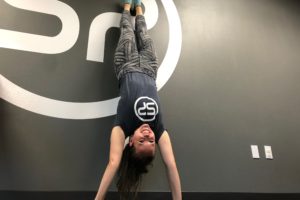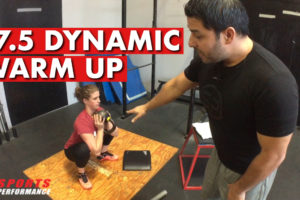
Think about it. How often throughout the day are you using both sides of your body equally and symmetrically? We all have a dominant side. It could be the right or left or you could even be ambidextrous. Either way, one side tends to take over. It is important to note that you may be right handed, but your lower body could be left side dominant. Most people are aware of what upper body side is more dominant, but fail to notice the difference for the lower body. Not everyone experiences pronounced differences in left versus right and if they are present, these differences have a funny way of showing themselves. Here at Sports Performance, we dive deep into the evaluation by looking at your overall functional movement and training to determine if you need to incorporate more unilateral movement into your routine. Here are three reasons as to why unilateral strengthening exercises are an essential staple in your daily life.
1) Nothing is Bilateral – Besides weightlifting, no sport is played on both feet at the same time or using both arms equally simultaneously. Most sports or daily activities are not viewed as equal and symmetrical with regards to both sides of the body. Soccer has a stance leg and a kick leg. You throw with one arm in baseball. You swing to one side in golf. Gymnastics/dance has a support leg and a flexible leg. I could keep going but that is just the sport list! What about brushing your teeth, washing dishes, or cleaning your house?
2) Muscles Imbalances – Due to the nature of how we humans do things, as explained above, it is not uncommon to have muscle imbalances. We are bound to have a “stronger side” which is more prone to overuse injury and our “weaker side” is more prone to injury in general. The “stronger side” gets overused and overtrained while the “weaker side” doesn’t build up the strength and stability when compared to the dominant side. This can lead to different muscles being recruited on the “weaker” side which shouldn’t be the primary movers – for example: bench press should be primarily chest and triceps but the secondary movers are the back and shoulders.
3) Utilizes Core – with unilateral movements, you are not only challenging right versus left, but you are also challenging your abdominal muscles. When you perform a movement on one side, with load or not, you have to challenge your core to balance out the movement. For example, perform a single leg squat on the left and the right side of your trunk has activate to help you remain upright. These unilateral movements not only force you to activate your core, but also leads to a more stable hip and low back complex as well.
Ultimately, unilateral strength exercises can help isolate and correct muscle imbalances, aid in injury prevention, facilitate rehabilitation and improve overall balance in our bodies. Below are a few examples of both upper and lower body unilateral movements, but how these can be applied vary between each individual.
Examples:
UPPER: Single arm bench press, single arm overhead press, single arm lat pulldown.
LOWER: Single leg squat, lunges, RDL’s.
As always, we hope this helps! If you have any questions or if you would like to read about certain topics, feel free to send us an email at TeamSP@SportsPerformancePT.com.
-Dr. Melanie

STAY CONNECTED
Instagram: CLICK HERE
Facebook: CLICK HERE
YouTube: CLICK HERE
Podcast: CLICK HERE
TUNE IN TO OUR PODCAST












